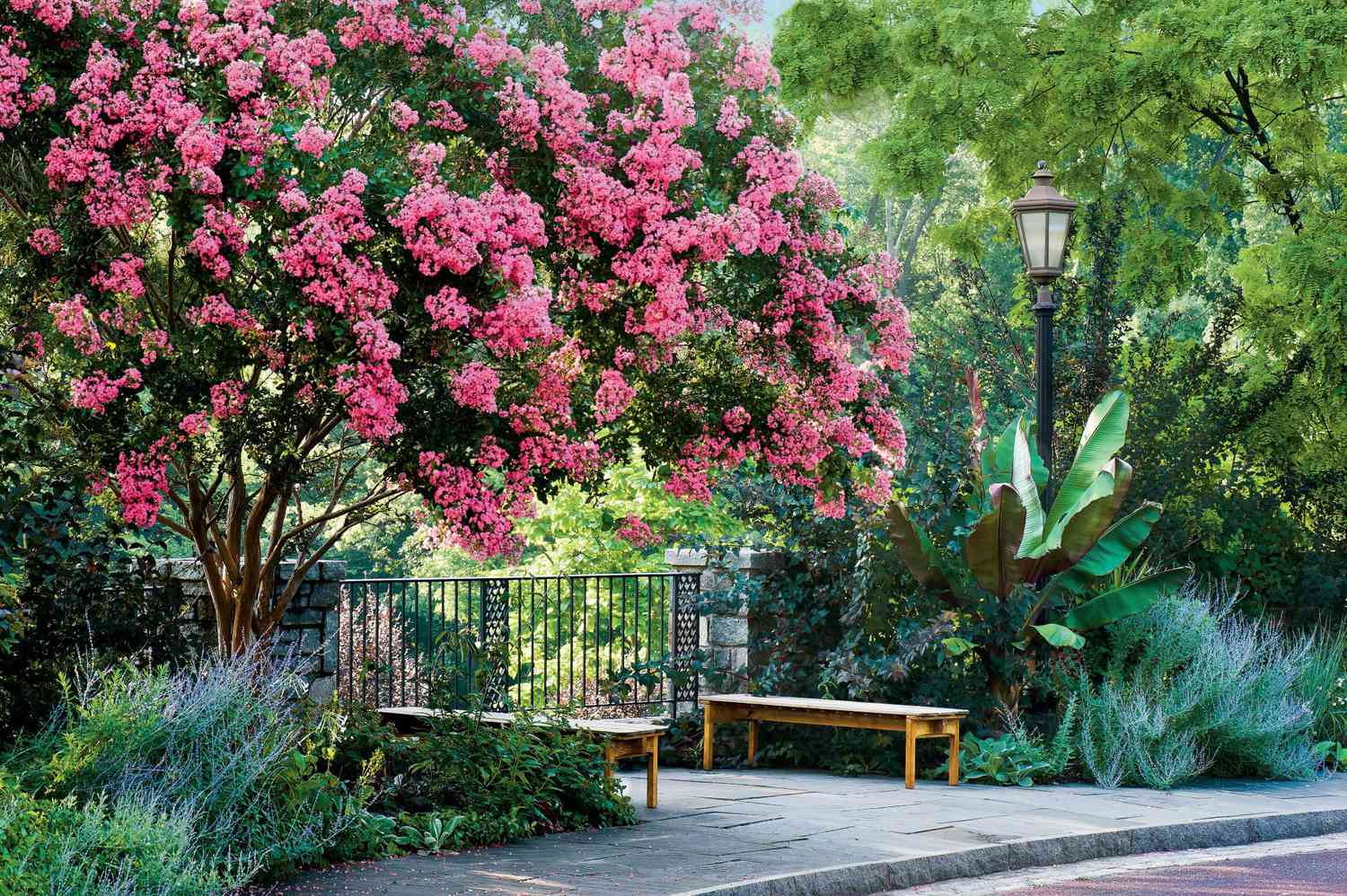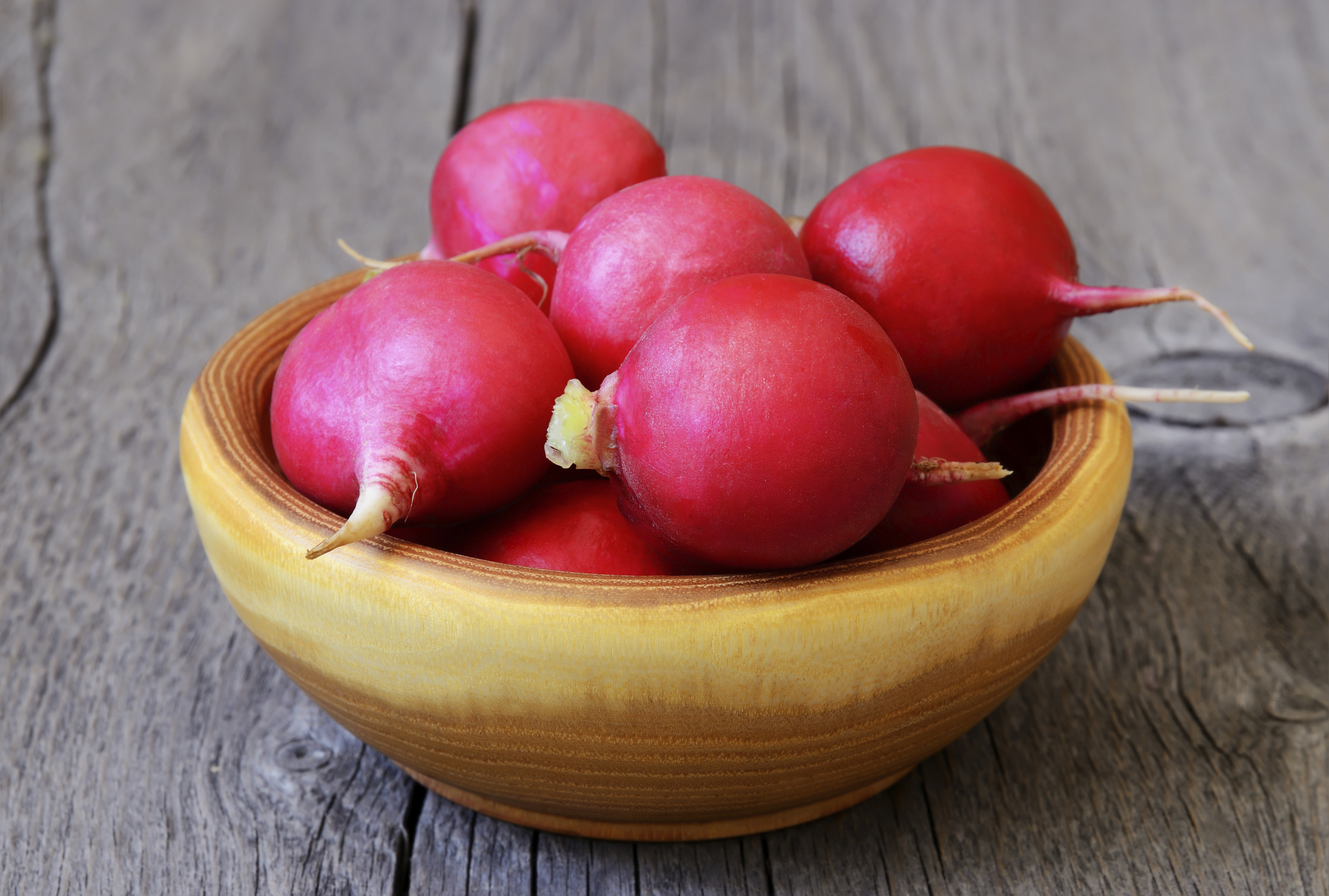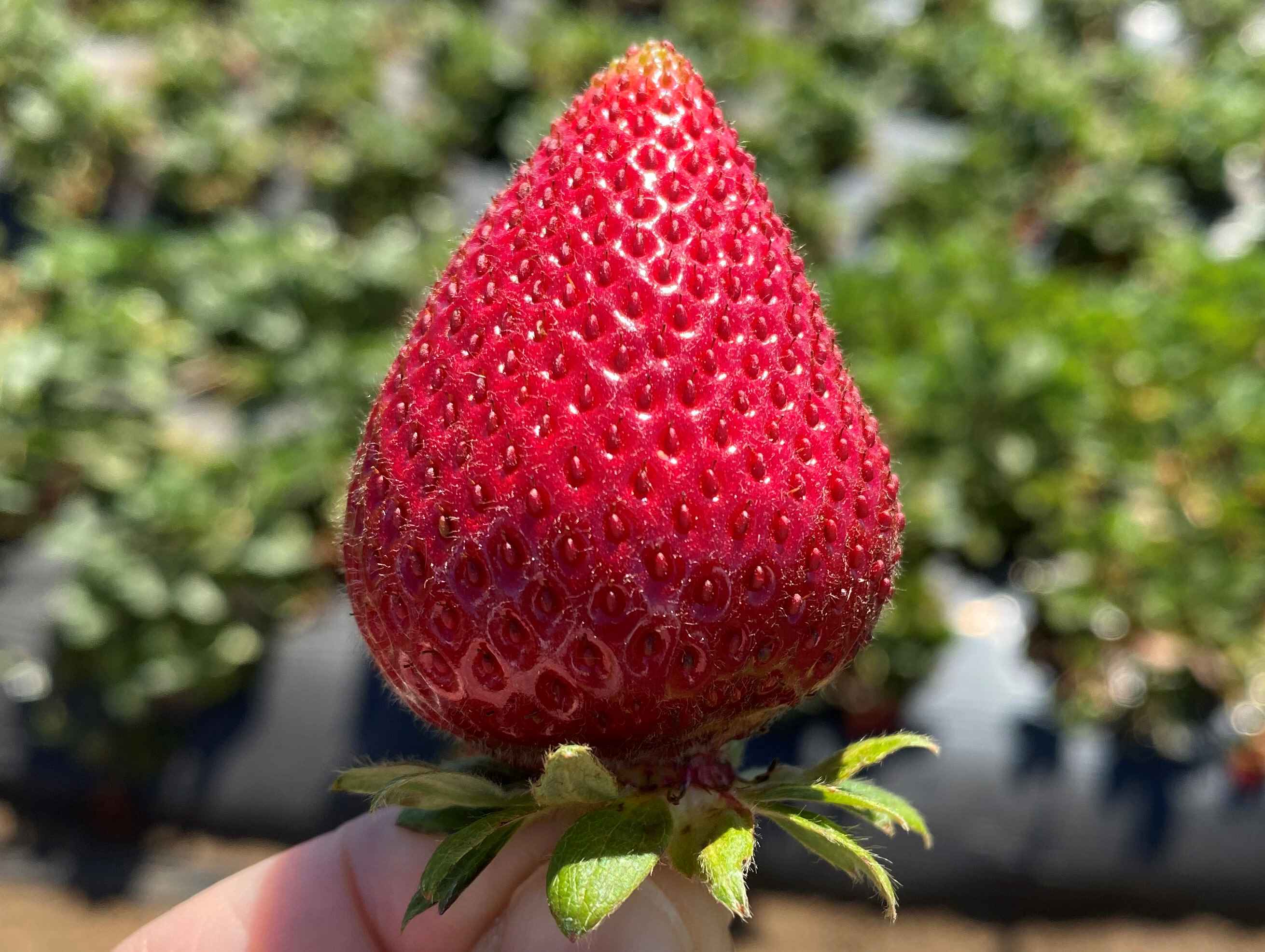Home>Types of Gardening>Ornamental Gardening>What Trees Have Pink Blooms


Ornamental Gardening
What Trees Have Pink Blooms
Modified: January 22, 2024
Discover the beauty of ornamental gardening with these stunning trees that boast pink blooms, adding a vibrant touch to any outdoor space.
(Many of the links in this article redirect to a specific reviewed product. Your purchase of these products through affiliate links helps to generate commission for Chicagolandgardening.com, at no extra cost. Learn more)
Table of Contents
Introduction
Welcome to the wonderful world of ornamental gardening! If you’re a fan of vibrant colors and eye-catching blooms, then you’re in for a treat. In this article, we will explore some of the most stunning trees that have pink blooms. These trees not only add beauty and charm to any garden or landscape but also create a serene and enchanting atmosphere.
Imagine walking through a garden filled with delicate pink flowers, their sweet fragrance filling the air and attracting butterflies and bees. These trees provide a stunning backdrop for any setting, whether it’s a small backyard garden or a grand park. Their vibrant pink blooms are a sight to behold and never fail to evoke feelings of joy and tranquility.
Whether you’re looking to enhance the aesthetic appeal of your garden or simply want to immerse yourself in nature’s splendor, these trees with pink blooms are sure to leave a lasting impression. From the iconic cherry blossom trees to the elegant dogwood trees, each tree has its own unique characteristics and charm.
In the upcoming sections, we will delve into the details of each tree, exploring its characteristics, growing conditions, and maintenance requirements. By the end of this article, you’ll have a wealth of knowledge about these magnificent trees, enabling you to choose the perfect one for your ornamental garden.
Cherry Blossom Trees
Cherry blossom trees, also known as Sakura trees, are perhaps one of the most iconic symbols of natural beauty. Originating from Japan, these trees are renowned for their stunning pink blooms that adorn the branches in the springtime.
There are several varieties of cherry blossom trees, each with its own distinct features. The most popular variety is the Yoshino cherry tree, which produces masses of delicate pale pink flowers. These flowers create a breathtaking spectacle when they burst into bloom, transforming the landscape into a beautiful pink wonderland.
Cherry blossom trees thrive in temperate climates and require full sun exposure to flourish. They prefer well-drained soil, and regular watering is essential, especially during periods of drought. These trees also require some pruning to maintain their shape and promote healthy growth.
In addition to their stunning appearance, cherry blossom trees hold significant cultural and symbolic value. In Japan, they are a symbol of the transient nature of life, representing beauty and the importance of appreciating the present moment. Cherry blossom festivals are celebrated around the world, attracting people from all walks of life who gather to witness the spectacle of these magnificent trees in full bloom.
If you’re considering planting a cherry blossom tree in your garden, be prepared for a show-stopping display of pink blooms in the spring. These trees are sure to impress visitors and create a serene and tranquil atmosphere. Whether you choose to have a single tree as a focal point or create an entire cherry blossom avenue, these trees will undoubtedly add charm and beauty to your ornamental garden.
Dogwood Trees
Dogwood trees are another stunning option for adding pink blooms to your ornamental garden. These trees are known for their elegant and showy flowers, which range in color from soft pink to vibrant magenta.
The most common species of dogwood tree is the Cornus florida, which is native to eastern parts of North America. It features clusters of four-petaled flowers that create a visually striking display in the spring. The flowers emerge before the leaves, creating a beautiful contrast against the tree’s branches.
Dogwood trees prefer slightly acidic soil and require regular watering to thrive. They can tolerate partial shade, but they will produce the most abundant blooms in full sun. When planting dogwood trees, it’s important to provide them with well-drained soil to prevent root rot.
Aside from their stunning flowers, dogwood trees also offer year-round beauty. In the fall, the leaves turn vibrant shades of red and purple, adding a splash of color to the landscape. During the winter months, the bare branches create an interesting silhouette against the sky, showcasing the tree’s unique structure.
One popular variety of dogwood tree is the Cherokee Chief, which boasts beautiful deep pink blossoms. The Pink Dogwood is another favorite, with its delicate light pink flowers that add a touch of romance and charm to any garden.
Whether you plant a single dogwood tree as a focal point or create a cluster of these magnificent trees, they are sure to be a captivating addition to your ornamental garden. Their pink blooms, combined with their year-round beauty, make dogwood trees a popular choice among garden enthusiasts.
Magnolia Trees
Magnolia trees are known for their large, fragrant, and stunningly beautiful flowers, and there are several species that offer pink blooms. These trees have a timeless and elegant appeal that adds a touch of sophistication to any garden.
One popular variety of magnolia tree is the Saucer Magnolia (Magnolia × soulangeana). This tree features large, cup-shaped flowers in shades of soft pink and white. The flowers are often fragrant and create a spectacular display in the early spring, before the leaves unfurl.
Magnolia trees prefer well-drained soil and full sun to part shade. They are relatively low-maintenance and only require pruning to remove dead or damaged branches. These trees are also known for their glossy, dark green leaves, which provide an attractive contrast to the delicate pink blooms.
Another magnificent pink-blooming magnolia tree is the Jane Magnolia (Magnolia ‘Jane’). This variety offers deep pink, tulip-shaped flowers that add a burst of color and vibrancy to the garden. The Jane Magnolia is a deciduous tree, meaning it sheds its leaves in the fall, revealing its striking bark that adds visual interest during the winter months.
In addition to their stunning flowers and attractive foliage, magnolia trees have a rich history and cultural significance. These trees have been around for millions of years and are often associated with purity and nobility. They have been referenced in ancient folklore, literature, and even used as inspiration for architectural designs.
Whether you choose a Saucer Magnolia, a Jane Magnolia, or any other pink-blooming magnolia tree, you are sure to be enchanted by their beauty and elegance. These trees are the epitome of grace and are guaranteed to become a highlight in your ornamental garden.
Pink Tabebuia Trees
Pink Tabebuia trees, also known as Pink Trumpet trees, are a delightful addition to any garden or landscape. With their vibrant display of pink flowers, these trees bring a splash of color and beauty that is hard to ignore.
The Pink Tabebuia tree, scientifically known as Tabebuia heterophylla, is native to parts of South America and the Caribbean. It is a deciduous tree that sheds its leaves in the cooler months, allowing its spectacular pink trumpet-shaped flowers to take center stage.
One of the remarkable features of Pink Tabebuia trees is their ability to produce an abundance of blooms. When these trees are in full bloom, their branches become adorned with clusters of beautiful pink flowers, creating a breathtaking spectacle.
Pink Tabebuia trees thrive in tropical and subtropical climates and require full sun exposure to flourish. They can tolerate a variety of soil types, as long as they are well-drained. These trees are relatively low-maintenance, but regular watering is necessary, especially during dry periods.
Aside from their stunning appearance, Pink Tabebuia trees offer additional benefits to the ecosystem. The abundant flowers attract pollinators like bees and butterflies, contributing to the overall health of the garden. These trees also provide shade and shelter to other plants and animals, creating a harmonious environment.
Whether you choose to plant a Pink Tabebuia tree as a focal point in your garden or incorporate it into a larger landscape design, its vibrant pink blooms are sure to steal the show. These trees bring a cheerful and lively energy to any space, making them a popular choice for both homeowners and landscapers.
Pink Oleander Trees
Pink Oleander trees, scientifically known as Nerium oleander, are an enchanting addition to any ornamental garden. With their stunning pink flowers and evergreen foliage, these trees bring beauty and elegance to any landscape.
Oleander trees are native to the Mediterranean region and are well-known for their tolerance to heat, drought, and poor soil conditions. This makes them an ideal choice for gardens in warm and dry climates, where other plants may struggle to thrive.
Oleander trees produce clusters of trumpet-shaped flowers in shades of pink, ranging from light pastel hues to vibrant magenta. These flowers are not only visually appealing but also emit a delightful fragrance, attracting bees, butterflies, and hummingbirds.
When planting Pink Oleander trees, it’s important to consider their size and growth habit. Mature Oleander trees can reach heights of up to 20 feet and have a spreading growth pattern. It’s advisable to provide adequate spacing and regular pruning to maintain their shape and size.
While Pink Oleander trees are renowned for their stunning blooms, it’s crucial to note that all parts of the plant are toxic if ingested. Keep this in mind when selecting the location for planting, especially if you have children or pets. Avoid planting Oleander trees near grazing areas for livestock.
In addition to their beauty, Pink Oleander trees are also remarkably versatile in landscaping. They can be grown as freestanding specimens, used as privacy screens, or even shaped into hedges. Their dense evergreen foliage provides year-round interest and adds a touch of elegance to any outdoor space.
Whether you’re looking to create a captivating focal point or add a touch of Mediterranean charm to your garden, Pink Oleander trees are an excellent choice. Their pink blooms, fragrant flowers, and evergreen foliage make them a stunning and resilient addition to any ornamental garden or landscape.
Pink Fringe Trees
Pink Fringe Trees, scientifically known as Chionanthus virginicus, are a unique and beautiful option for adding pink blooms to your ornamental garden. With their delicate, feathery pink flowers, these trees create a whimsical and enchanting atmosphere.
The Pink Fringe tree is native to the southeastern United States and is appreciated for its ornamental value. In the spring, before the leaves emerge, the tree produces an abundance of fragrant, fringe-like flowers in shades of soft pink. These flowers cascade from the branches, creating a stunning visual display.
Pink Fringe trees are relatively small in size, typically reaching heights of 15 to 20 feet. They are known for their attractive, glossy green leaves, which turn vibrant shades of yellow in the fall, offering an additional burst of color to the landscape.
These trees thrive in well-drained soil and prefer full sun to light shade. They are adaptable and can tolerate a range of soil conditions, making them suitable for a variety of garden settings. Pink Fringe trees are also relatively low-maintenance, requiring minimal pruning and moderate watering.
Aside from their aesthetic appeal, Pink Fringe trees also provide ecological benefits. The fragrant flowers attract pollinators such as bees and butterflies, contributing to the overall health and biodiversity of the garden. The tree’s dense foliage also provides shade and shelter for birds and other small wildlife.
Whether planted as a standalone specimen or incorporated into a mixed border, Pink Fringe trees add a touch of elegance and charm to any garden or landscape. Their feathery pink flowers create a sense of magic and romance, making them a popular choice among garden enthusiasts.
Conclusion
Adding trees with pink blooms to your ornamental garden is a surefire way to create a stunning and captivating landscape. The trees mentioned in this article, such as the Cherry Blossom, Dogwood, Magnolia, Pink Tabebuia, Pink Oleander, and Pink Fringe trees, offer a wide range of options to suit different climates, preferences, and garden styles.
From the iconic beauty of Cherry Blossom trees to the elegant blooms of Dogwood trees, each tree has its own unique charm and characteristics. The vibrant pink flowers can create a truly enchanting atmosphere, attracting pollinators and providing a visual feast for the eyes.
When incorporating these trees into your garden, it’s essential to consider their specific growth requirements, including sunlight, soil type, and watering needs. Paying attention to these factors will ensure the trees thrive and continue to provide their stunning pink blooms year after year.
Furthermore, while focusing on the aesthetics, it’s crucial to keep in mind the potential ecological benefits these trees offer. Many of them attract pollinators, contribute to the overall biodiversity of the garden, and provide shelter for birds and other wildlife.
Whether you choose to create an entire garden inspired by the fascinating beauty of these trees or incorporate them as focal points in your existing landscape, their pink blooms are sure to make a statement and leave a lasting impression on anyone who sees them.
So, go ahead and explore the world of ornamental gardening with these beautiful trees. Let their pink blooms take center stage and transform your garden into a haven of natural splendor and tranquility.








